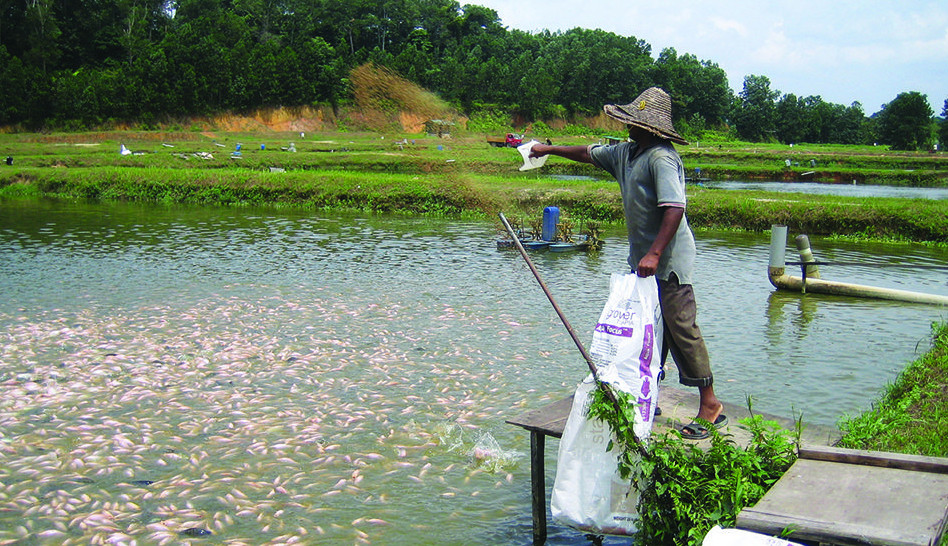Tilapia, a popular freshwater fish, is cherished for its mild flavor and nutritional benefits and for its adaptability to various diets. Whether you’re a seasoned tilapia enthusiast or a novice fish keeper, understanding the diverse range of foods that tilapia can consume is essential for their well-being and optimal growth. From commercial tilapia feeds to homemade feeds, we’ll explore the various options available to keep your tilapia happy, healthy, and thriving in this comprehensive guide.
-
Commercial Tilapia Feeds
The most convenient and widely used option for tilapia is commercial tilapia feed. These feeds are specially formulated to meet the nutritional requirements of tilapia at different stages of development. They typically contain a balanced combination of proteins, fats, vitamins, and minerals essential for the fish’s growth and overall health.
-
Pellets and Flakes
Pellets and flakes designed for freshwater fish can also be part of a tilapia’s diet. These products are readily available and provide a convenient way to deliver essential nutrients. Ensure that the pellets are suitable for the size of your tilapia to prevent overfeeding or difficulty in consumption.

Tilapia feeding -
Live and Frozen Foods
Tilapia are omnivorous and enjoy a variety of live and frozen foods. These include brine shrimp, daphnia, and bloodworms. These options add diversity to their diet and stimulate natural hunting instincts. Frozen foods are a practical alternative when live options are not readily accessible.
-
Vegetables
Vegetables are a crucial component of a balanced tilapia diet. Leafy greens like spinach, kale, and lettuce provide essential vitamins and minerals. Vegetables should be finely chopped or blanched to make them easily digestible for tilapia. Additionally, consider introducing vegetables rich in beta-carotene, such as carrots, for vibrant coloration.
-
Fruits
While fruits should be offered in moderation due to their sugar content, they can be a delightful treat for tilapia. Pieces of fruits like watermelon, cantaloupe, and apple provide a source of natural sugars and additional vitamins. Ensure the fruits are cut into small, manageable pieces to prevent choking hazards.
-
Aquatic Plants
Incorporating aquatic plants into the tilapia’s environment enhances the tank’s aesthetics and serves as a source of natural food. Plants like duckweed and water lettuce are visually appealing and provide a nutritious snack for tilapia.
-
Insects and Worms
Tilapia are known to consume various insects and worms. Crickets, mealworms, and earthworms are excellent protein sources that mimic the tilapia’s natural diet. To prevent harm to the fish, ensure that these are from reputable sources and free from pesticides.
-
Algae and Spirulina
Algae and spirulina are excellent sources of plant-based proteins and essential nutrients. They contribute to the overall health of tilapia and can enhance the fish’s coloration. Consider adding algae wafers or spirulina flakes to their diet.
Conclusion
Understanding the diverse range of foods that tilapia can eat is fundamental to maintaining their health and ensuring their well-being. From commercial feeds to live and frozen options, vegetables, fruits, and natural sources like insects and algae, a well-rounded diet promotes optimal growth and vibrant coloration. As responsible fish keepers, we must offer a balanced and varied diet that meets the nutritional needs of these adaptable and fascinating freshwater fish.
See Also:
- Pangasius Farming in the Philippines: How to Grow and Culture Kanduli
- Grouper Farming in the Philippines: How to Grow and Raise Lapu-Lapu
- Sea Urchin Farming: How to Grow and Culture Sea Urchin
- Goldfish Farming in the Philippines: How to Grow Goldfish for Profit
- Lobster Farming in the Philippines: How to Grow and Culture Lobster
